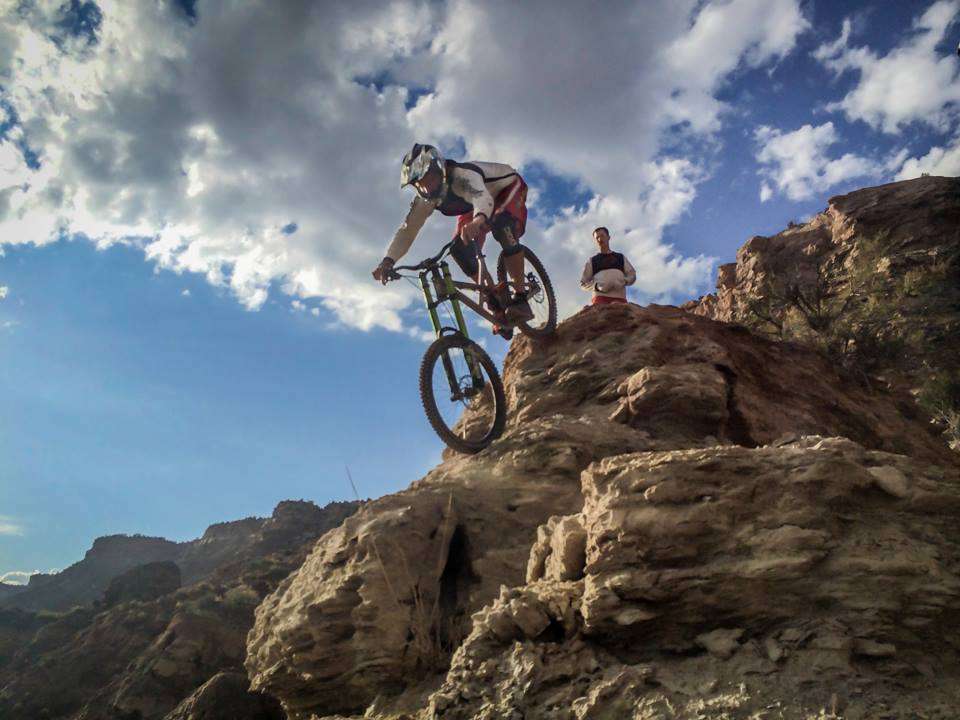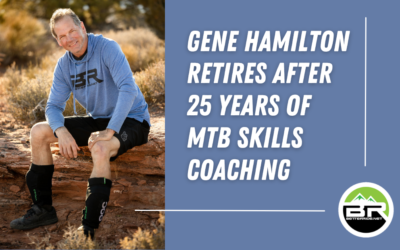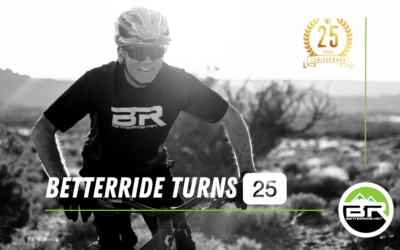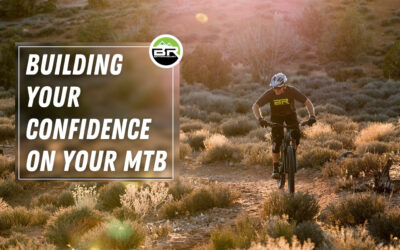Using your front brake effectively is one of the most important skills on a mountain bike. Proper use of the front brake gives you much more control making you safer, faster and more confident. Now, when braking to cut speed (the main reason we use our front brake) you also want to use that weak rear brake to assist that powerful front brake. Watch my video tutorial and then read below for more detail on this important mtb skill.
An important piece I left out of the video is that you always want to cut speed in a straight line! Using that front brake and cutting speed in a corner is a recipe for disaster!
Your body position while braking is crucial and this often taught wrong (I taught it incorrectly from the start of BetterRide in the spring of 1999 until the fall of 2005)! What I taught and what I recently read from one of the best downhill racers in the world is, as you are braking get your weight back. This is terrible advice for a number of reasons (that I will address in a moment), so why did one of the best downhill racers in the world recommend this position? Because it feels like you are getting back when you are braking hard, what he is actually doing is bracing really hard so he doesn’t get tossed forward.
Granted, I used to get my weight back while braking and because it was such an ingrained habit! I still start to scout back sometimes when braking hard. It is also human instinct to move away from danger so it feels good to scoot back (until you crash :)).
There are a few reasons pushing your weight back while braking is bad (or pretty much any time except when manuling) :
- It puts you in an off-balance and non-neutral position that I call the flying catapult! As your arms straighten and your butt goes back you end up at the end of your range of motion, with no “sag” in your body’s suspension. In this position, if your front wheel were to suddenly descend (drop or roll) more than a foot you will get yanked forward and downward causing your weight to get tossed forward. If you have ever had an endo where it felt like your bike catapulted you into the ground, it did (catapult you into the ground). Please check out this blog article on the importance of neutral, centered position on your bike: http://betterride.net/blog/2010/mountain-bike-desending-body-position-101-video-demonstration/
- It greatly decreases your control and increases your braking distance (by taking weight off of the front wheel, not allowing you to use as much of that powerful front brake. This is easy to test (though a bit scary), simply to do the braking drill in my video on a dirt road or looser surface with your weight back. Instead of quickly coming to a stop, your front wheel will skid! See 6 second video below.
- Usually, you are braking for a trail feature, most often on the straightaway into a corner, do you want to enter a corner with your weight back (no weight on the front wheel?). If the top downhill racer who recently said that you should shift your weight back while braking actually did that you would see him scoot back as he was braking for the corner, then, all in one motion, let go of the brakes, shift his weight forward and initiate the turn!
- For more on this please read this article: http://betterride.net/blog/2014/braking-on-your-mountain-bike/
Speaking of the importance of using your front brake and braking in a straight line before a corner, a few years ago Cody Kelly (https://www.alchemy.bike/cody) was really excited to tell me that he is wearing out two sets of front brake pads before one set of rear brake pads! After hearing this I bowed to him and he said, “why are you bowing to me, you taught me to do that”. I replied that I may have taught him that (he took 5 or 6 of my camps) but I have 20 years of bad habits to overcome so I don’t exactly do that. In other words, I wasn’t practicing enough! The idea of wearing out two sets of front brake pads before one set of rear pads did inspire to practice more and while I don’t have Cody’s ratio for the last two years I have been wearing out one set of front pads before wearing out my rear pads!
Are you wearing out your front brake pads before your rear pads? Feel free to comment and/or ask any questions below.
Please share this article with anyone you feel could benefit from it.





Hi Gene,
Awesome tip as always!
What about when descending and trying to keep the speed in check (gathering speed might make everything scarier), using the front brake on roots and rocks might end up with the rider OTB.
I think in these situation modulate the rear brake and use the front to brake hard on clear ground ?
What are your tips on this ?
Vlad
Hi Vlad,
Ideally, you want to cut speed on smooth sections and coast through rough sections. There are so many variables, the size of the roots/rocks, on camber vs. off camber (don’t brake on off camber!), moisture (on sandstone it can actually make it grippier but on roots, they become extra slick) and whether the rocks are loose or not. Big rocks (like the huge slabs in Moab) provide great braking small, loose rocks poor braking.
If the trail is rough enough the roughness does some/all the braking for you.
In general, the better traction the better braking, the less traction the worse the braking (longer stopping distances).
I could write an entire blog article on where and how to brake! and I just might!
Thanks for the reply Gene!
Yeah it is a topic in itself and would be a great article.
If I may another extremely important topic would be vision so a 2 minute tip with a drill on how to practice it or an article would be greatly appreciated.
Vlad
So important Gene,
The first question l ask newer riders is which hand controls your front brake. It should be instinctive, and it is easily moved to where the instinct is. A big mistake is trying to learn what is awkward, make it easy and switch it if you have to. Half the world runs them moto-style…so whatever works for you. #wrenchrideandroost
Hi Gene,
Am I wearing out my front brake pads before my rear ones?
On my road bike, yes.
On my dirt bike, no, it’s the other way around.
On my mountain bike, depends where and how I’ve been riding it. On that note. I always wanted to ask Steve Peat why he had a Saint brake on the back and an XTR on the front of his downhill bikes. Ever get a chance to ask him?
I’ve always done basic braking drills making sure to keep my weight on my feet and off the bars, I was taught that this keeps you capable of steering effectively (along with proper body position). You mention transferring weight onto the bars in your video. Has there been a change in teaching technique?
Thanks for your insight,
David
Hi David,
Great job on your road bike!
I would love to know why Steve Peat did that too! I’ll ask Greg Minnaar and see if he knows.
Are you saying that you can brake aggressively without any weight transferring to the bars?! It isn’t a great deal of pressure, but for me there is definitely pressure and my fork definitely dives a bit.
When I brake aggressively (without straightening out my arms and putting my weight too far back) I have to push back against my bars (and pedals) or my body will want to keep going.
I would love to learn how to do that (and I think Cody Kelly would too).
Thanks for your help with this!
Just realized this could come off as being sarcastic, that wasn’t my intention. I’m honestly curious. 🙂
Hi Gene,
I went back and checked my notes. Unfortunately, the course material is in a different language so a reference probably won’t help you much. A quick search turned up similar advice in English on p.72 of “Mastering Mountain Bike Skills, 3rd E.” (Google books).
It would be great if you find out what’s up with Steve Peat’s setup, let me know!